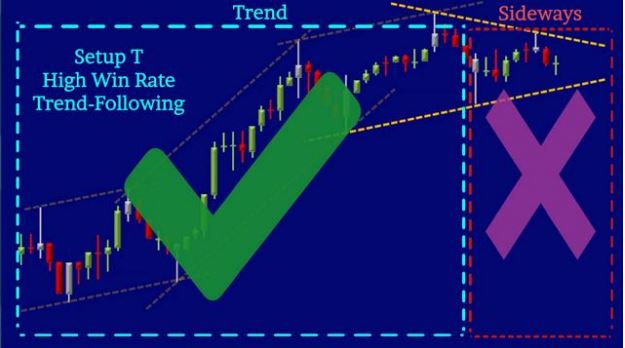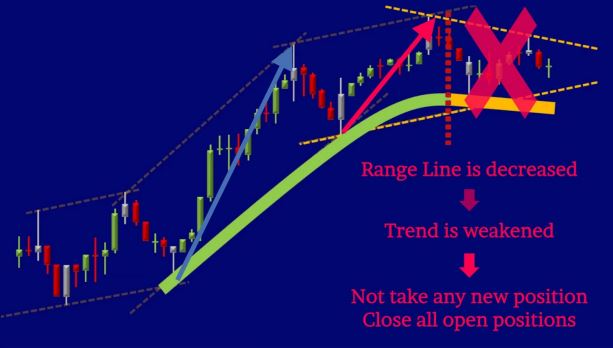Application of Momentum Range Analysis
In this lesson of chapter 10, we will explore the application of Momentum Range Analysis to effectively analyze the strength and weakness of emerging trend patterns.
In Price Action Algo Trading, our primary focus is on the trend-following setup, known as Setup T. This setup has consistently shown a high win rate and will be extensively
discussed in chapters 15 to 33.
It is crucial to be able to identify and trade only the trending patterns while avoiding sideways patterns that may not align with the desired setup, as illustrated below:


As you have learned in the previous chapters, the shift from a sideways pattern to a trending market, and vice versa, happens gradually and is often overlooked by many
traders in real-time.
By utilizing Momentum Range Analysis to evaluate the strength and weakness of a trend, you can obtain early insights into the emergence of a trend and recognize when it is approaching its late stage, indicated by a loss of momentum, as illustrated below:


When the analysis of momentum indicates that a trend is weakening, it is prudent to exercise caution in taking new positions and be prepared to manage existing open
positions. Weakening momentum suggests a potential loss of strength in the trend, which can increase the likelihood of a trend reversal or a period of consolidation.
When momentum analysis indicates that the trend has weakened, it is advisable not to enter any new positions and be prepared to close all existing open positions, as demonstrated in the example below:
Now, let’s practice applying the MRA to identify the last price turning point that indicates a decrease in momentum, which serves as an early indication of a potential end to a trend pattern in real market charts. This analysis should be conducted in a forward test manner, simulating the live market conditions on the price chart.
It is important to allocate dedicated time for practice in order to develop and refine your skills in this area. Utilize various techniques such as forward-testing, market replay, and live demos to acquire the essential PAAT skills necessary for success in trading.
